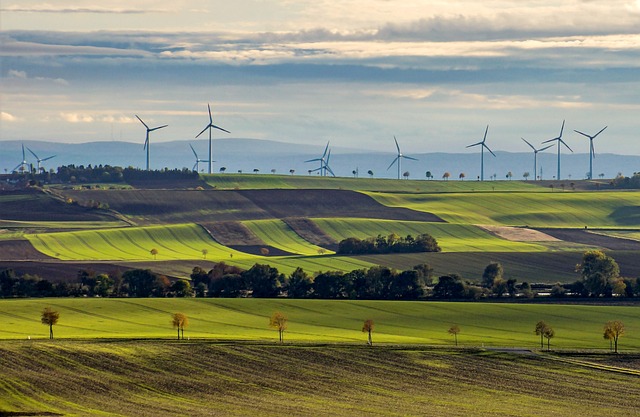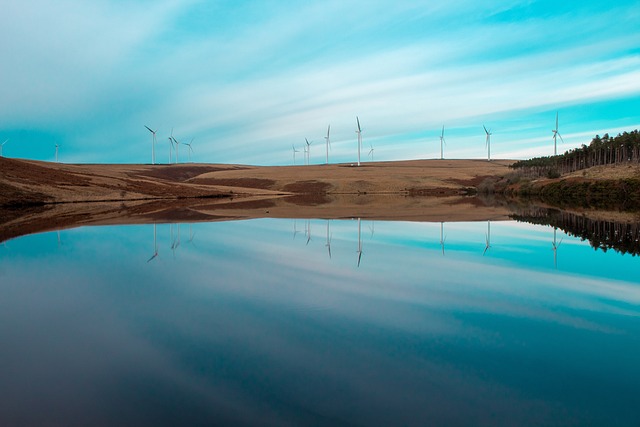Smart Grids: Cornerstone of Renewable Energy Future

Smart grids represent a significant leap in electricity management, utilizing advanced technologies …….
Introduction
Renewable energy innovations stand at the forefront of a global transition towards a more sustainable and resilient energy future. This transformation is not merely a response to environmental concerns but also a strategic move to address energy security, economic diversification, and technological advancement. In this article, we will explore the multifaceted world of renewable energy innovations, its historical evolution, current global impact, economic significance, technological advancements, policy frameworks, and future prospects. Readers will gain a comprehensive understanding of how these innovations are shaping our energy landscape and what role they play in the broader context of sustainable development.
Understanding Renewable Energy Innovations
Renewable energy innovations encompass a broad spectrum of technologies and approaches that harness natural processes to generate power. These include solar, wind, hydroelectric, geothermal, and biomass energy. The core components of renewable energy systems involve the capture, conversion, and storage of energy from renewable sources. Historically, the field has evolved from early experiments with photovoltaic cells in the 1950s to the deployment of large-scale wind farms and utility-scale solar parks today. Its significance is underscored by its potential to reduce greenhouse gas emissions, create green jobs, and foster energy independence across the globe.
Global Impact and Trends
The global impact of renewable energy innovations is evident in the rapid expansion of installed capacity worldwide. Key trends shaping this trajectory include technological improvements leading to higher efficiency, cost reductions due to economies of scale, and supportive policies at both national and international levels. Different regions are affected differently, with some like Europe and North America leading in capacity installations, while others like Asia and Africa are rapidly scaling up their efforts to integrate renewables into their energy mix. The International Energy Agency (IEA) reports that renewable power capacity growth accelerated in 2021, with a third of all new electricity generation coming from renewables.
Economic Considerations
From an economic standpoint, the renewable energy sector is a significant driver of investment and job creation. Market dynamics are influenced by factors such as technology costs, government incentives, and energy demand patterns. Investment in renewable energy innovations not only stimulates economic growth but also provides long-term stability and predictability in energy prices. The role of renewables in economic systems is increasingly recognized as a means to balance environmental sustainability with economic viability.
Technological Advancements
Technological advancements in the realm of renewable energy innovations are both remarkable and diverse. Breakthroughs such as more efficient solar panels, advanced wind turbines, improved battery storage systems, and smart grid technologies are enhancing the performance and integration of renewables into the energy system. The future potential of these technologies, including the integration of artificial intelligence and the Internet of Things (IoT), promises even greater efficiency and scalability.
Policy and Regulation
The governance of renewable energy innovations is shaped by a complex web of policies and regulations at all levels of government. Key policies include feed-in tariffs, renewable portfolio standards, carbon pricing mechanisms, and subsidies for research and development. These frameworks play a crucial role in incentivizing investment, ensuring a level playing field, and guiding the transition towards a cleaner energy system. The effectiveness of these policies is critical to the continued growth and adoption of renewable energy innovations.
Challenges and Criticisms
Despite its many benefits, renewable energy innovation faces several challenges and criticisms. These include intermittency and storage issues, grid integration complexities, raw material supply chain concerns, and the need for significant infrastructure investments. Strategies to overcome these challenges involve technological improvements in energy storage, advanced grid management solutions, and the development of more sustainable materials for renewable technologies.
Case Studies
Several case studies exemplify successful applications of renewable energy innovations. Germany’s Energiewende policy, which aims to transition to renewable energy, has been a model for other nations. The US’s continued expansion of wind and solar installations, particularly in states like Texas and California, showcases the economic viability of renewables at scale. Meanwhile, China’s aggressive investment in solar and wind technology demonstrates its commitment to becoming a leader in the global renewable energy market. These case studies provide valuable lessons on policy implementation, technological integration, and the social and economic impacts of transitioning to renewables.
Future Prospects
The future outlook for renewable energy innovations is one of optimism and anticipation. Potential growth areas include enhanced integration of renewables into transportation sectors through electric vehicles (EVs) and the electrification of heating systems in residential buildings. Emerging trends such as green hydrogen production and the optimization of existing technologies are also on the horizon. Strategic considerations for investors, policymakers, and industry leaders will focus on addressing market volatility, technological barriers, and the acceleration of sustainable practices across all energy sectors.
Conclusion
Renewable energy innovations represent a transformative shift in our approach to energy production and consumption. Their significance is multifaceted, influencing environmental health, economic growth, and social well-being. The insights provided throughout this article underscore the critical role of these innovations in shaping a sustainable future. As we continue to navigate the complexities of this transition, it is clear that renewable energy will be at the forefront of global efforts to address climate change and build a resilient energy infrastructure for generations to come.
Note: The information provided here is based on data available up to early 2023. The field of renewable energy innovations is rapidly evolving, with new advancements and policy changes continually shaping its trajectory. For the most current information, readers are encouraged to consult recent reports from authoritative sources such as the International Renewable Energy Agency (IRENA), the International Energy Agency (IEA), and national energy departments or agencies.

Smart grids represent a significant leap in electricity management, utilizing advanced technologies …….

Recent innovations in wind turbine technology have significantly improved their performance and eff…….

2024 has been a landmark year for renewable energy advancements, with significant breakthroughs in s…….

Floating solar farms utilize water bodies to generate clean energy efficiently with minimal land us…….